Is it always easy for you to prioritize the tasks of the huge project? What if five or more tasks have the main priority and urgency?
Experienced project managers and product owners know that intuition is not enough in such cases. In order to avoid missing deadlines, today, managers are able to apply useful methodologies for determining priorities, as well as modern tools that help to visualize data and not miss anything in their workflows.

All projects require setting priorities, no matter what business area you represent. Prioritization skills will positively affect the success of your work and particular IT projects. They'll also influence the engagement of your team and your role as a strong leader.
Prioritization means arranging activities or items in order of importance relative to each other.
How to prioritize daily stuff if everything is extremely urgent?
You even do not need to be a star in project management, because there are some simple rules that may be followed by everyone. For example:
There is (fortunately not so popular) opinion that detailed prioritization is needed mainly for complex technical projects. Not really. The ability to prioritize professionally can be crucial for everyone: from students to top managers with their global purposes.
Prioritization may simplify your professional life if you are a product manager, project manager, software developer, marketer, business analyst, designer, construction manager, event manager, professor or teacher, HR, insurance agent, etc.
Here we suggest considering 5 well-known prioritization approaches that will definitely help you to achieve success.
Is there an ideal methodology that is able to once set all priorities in tasks and personal affairs? Perhaps each project manager has their own answer to this question. However, there are some powerful prioritization methods that have proven themselves throughout the world, and their authors have received deserved respect among project managers and the business community.
The MoSCoW methodology for categorizing tasks is well-known all over the world and is widely used in various management areas.
There is nothing about the beautiful capital there, it's all about priorities.
The consonants in the acronym MSCW define a specific priority:
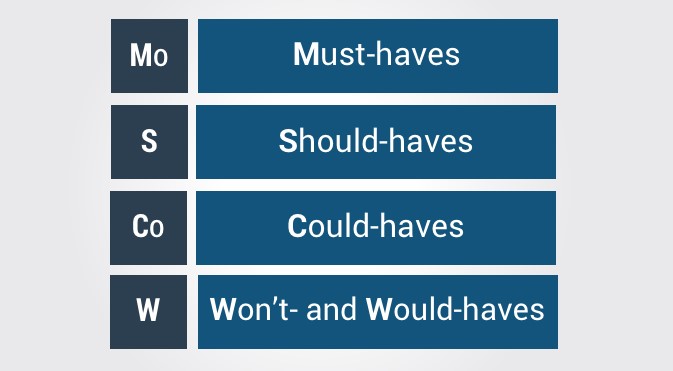
Let's see how it can be applied in Hygger.io management reality — how priorities can be determined according to the MoSCoW method:
Must have: we need to implement a Priority Chart — a schedule where it's possible to select the most valuable ideas, rank the ideas by Value/Efforts metrics, run the development support with Kanban and Scrum boards, add Burndown Chart for tracking sprint progress.
Should have: we have to add the time tracking feature to record the time worked, Cycle/Lead time report to control the process, add the integrating with Slack.
Could have: we should add a section of My Tasks, where you can see all the tasks in different statuses and implement Client Access to invite customers to projects.
Would have: it'd be nice to add Calendar View for whiteboard and integrate with various project management systems (Trello, JIRA, etc.)
The MoSCoW provides a quick and simple solution for prioritization. Therefore, it is better suited for internal projects, and not for products with a large number of clients.
The Kano model is the approach developed by the Japanese Noriaki Kano in 1984. He published his article where he described the new methodology.
The Kano model helps to visually describe what needs to satisfy customers or leave them unmet or delighted. The author proposes to utilize a coordinate system where satisfaction is measured along the Y-axis and the fulfillment level along the X-axis.
There are 3 main components of the quality profile in the Kano model, that influence customer satisfaction: expected, basic, and attractive.
Expected properties by Kano are the basic product or service properties that are by default. A buyer is unlikely to think about these properties because they take them for granted, as they are.
Airlines daily work can be an example of the expected properties. The guarantee that everyone has enough space in the cabin is the expected feature.
Basic properties mean that they are desired. Their implementation directly affects customer satisfaction. These basic properties are the factors that let products trying to stand out and create a competitive advantage.
In the example with airlines, the basic feature may be the absence of transfers on a long route.
Admirable properties are unexpected properties for the consumer: it's about additional, unusual or surprise-like actions or features.
Your favorite dessert on the air board is the example of such property.
The level of fulfillment of these properties does not directly affect customer satisfaction (as is the case with basic properties). If there is no unexpected property, the consumer should not be upset, as he/she did not expect it in the ranks of the expected properties.
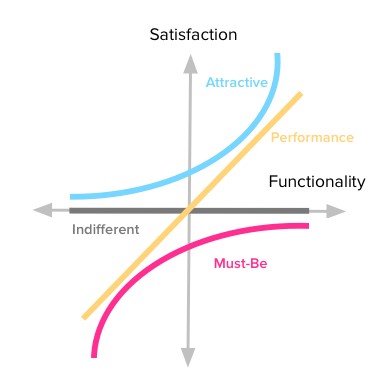
The method of Story Mapping became known at the beginning of the century from the article by Jeff Patton.
This approach means that a product backlog is not enough to prioritize the work. Patton believes that you need a more detailed structure and suggests the following mechanics:
Groups of related stories are grouped as activities.

This is a relatively simple visual presentation that allows teams, customers, partners or other stakeholders to share a common understanding of what is happening. The method clearly defines how to gradually release product iterations.
KJ method is a group process for setting priorities. This approach helps to come to an objective common agreement from subjective data. It looks appropriate for groups of any size.
The eight-step process is designed for a one-hour interval. To conduct it, you should have a room with a spacious wall, stickers of several colors, a flipchart for results of prioritization and a facilitator.

Adam Nash, the author of the method, describes his solution for determining priorities. In his opinion, the priority of tasks and functions varies greatly in different products and areas. Therefore, Nash outlines that the method was developed specifically for consumer online products.
According to the method, the features need to be distributed in four buckets.

Each prioritization method has its own characteristics, and probably all of them can be adapted to the conditions of your product or company.
To consolidate work with methodologies and data visualization and to empower your prioritization skills, it's worth to try a modern product management service that helps to deal with priorities.


Online tools for determining priorities and tracking task statuses facilitate planning and help prioritize all product tasks quickly and easily.
Whatever methodology or technique you choose, it is important to implement it with all seriousness. Do not hesitate: you may try a simple prioritization solution first, and then move on to more complex approaches and prioritization frameworks. Anyway, all of them look like a reliable success factor in everyday life and in business management.
Experienced project managers and product owners know that intuition is not enough in such cases. In order to avoid missing deadlines, today, managers are able to apply useful methodologies for determining priorities, as well as modern tools that help to visualize data and not miss anything in their workflows.

Prioritization empowers productivity
All projects require setting priorities, no matter what business area you represent. Prioritization skills will positively affect the success of your work and particular IT projects. They'll also influence the engagement of your team and your role as a strong leader.
What is prioritization exactly?
Prioritization means arranging activities or items in order of importance relative to each other.
How to prioritize daily stuff if everything is extremely urgent?
You even do not need to be a star in project management, because there are some simple rules that may be followed by everyone. For example:
- Intuitively identify urgent and important tasks
- Create to-do lists where you can collect all the tasks that you could possibly get done in a day and perform them
- Assess tasks value
- Order tasks by estimated effort
- Be flexible in changing tasks priorities any time
- Cut unnecessary from your list
- Focus on the main things
Why do we all need to master prioritization?
There is (fortunately not so popular) opinion that detailed prioritization is needed mainly for complex technical projects. Not really. The ability to prioritize professionally can be crucial for everyone: from students to top managers with their global purposes.
Prioritization may simplify your professional life if you are a product manager, project manager, software developer, marketer, business analyst, designer, construction manager, event manager, professor or teacher, HR, insurance agent, etc.
Here we suggest considering 5 well-known prioritization approaches that will definitely help you to achieve success.
5 best prioritization techniques
Is there an ideal methodology that is able to once set all priorities in tasks and personal affairs? Perhaps each project manager has their own answer to this question. However, there are some powerful prioritization methods that have proven themselves throughout the world, and their authors have received deserved respect among project managers and the business community.
1. MoSCoW prioritization technique
The MoSCoW methodology for categorizing tasks is well-known all over the world and is widely used in various management areas.
There is nothing about the beautiful capital there, it's all about priorities.
The consonants in the acronym MSCW define a specific priority:
- M = must. Here you place all the tasks (features or items) that are critical, they must be applied as a matter of priority.
- S = should. It's about the important but not critical tasks. They are not very sensitive to time.
- C = could. Desirable but not mandatory tasks for your release should be placed here.
- W = would. The Would-tasks are not critical. They may not correspond to the product strategy at all and even may be ignored.

Let's see how it can be applied in Hygger.io management reality — how priorities can be determined according to the MoSCoW method:
Must have: we need to implement a Priority Chart — a schedule where it's possible to select the most valuable ideas, rank the ideas by Value/Efforts metrics, run the development support with Kanban and Scrum boards, add Burndown Chart for tracking sprint progress.
Should have: we have to add the time tracking feature to record the time worked, Cycle/Lead time report to control the process, add the integrating with Slack.
Could have: we should add a section of My Tasks, where you can see all the tasks in different statuses and implement Client Access to invite customers to projects.
Would have: it'd be nice to add Calendar View for whiteboard and integrate with various project management systems (Trello, JIRA, etc.)
The MoSCoW provides a quick and simple solution for prioritization. Therefore, it is better suited for internal projects, and not for products with a large number of clients.
2. Kano model
The Kano model is the approach developed by the Japanese Noriaki Kano in 1984. He published his article where he described the new methodology.
The Kano model helps to visually describe what needs to satisfy customers or leave them unmet or delighted. The author proposes to utilize a coordinate system where satisfaction is measured along the Y-axis and the fulfillment level along the X-axis.
There are 3 main components of the quality profile in the Kano model, that influence customer satisfaction: expected, basic, and attractive.
Expected properties by Kano are the basic product or service properties that are by default. A buyer is unlikely to think about these properties because they take them for granted, as they are.
Airlines daily work can be an example of the expected properties. The guarantee that everyone has enough space in the cabin is the expected feature.
Basic properties mean that they are desired. Their implementation directly affects customer satisfaction. These basic properties are the factors that let products trying to stand out and create a competitive advantage.
In the example with airlines, the basic feature may be the absence of transfers on a long route.
Admirable properties are unexpected properties for the consumer: it's about additional, unusual or surprise-like actions or features.
Your favorite dessert on the air board is the example of such property.
The level of fulfillment of these properties does not directly affect customer satisfaction (as is the case with basic properties). If there is no unexpected property, the consumer should not be upset, as he/she did not expect it in the ranks of the expected properties.

3. Story Mapping technique
The method of Story Mapping became known at the beginning of the century from the article by Jeff Patton.
This approach means that a product backlog is not enough to prioritize the work. Patton believes that you need a more detailed structure and suggests the following mechanics:
- The horizontal axis represents the sequence of use. The tasks on it are placed in the sequence in which they are performed by the user.
- The vertical axis means criticality. Vertically, tasks are placed relative to how important they are from top to bottom. Equally important tasks can be defined at the same height.
Groups of related stories are grouped as activities.
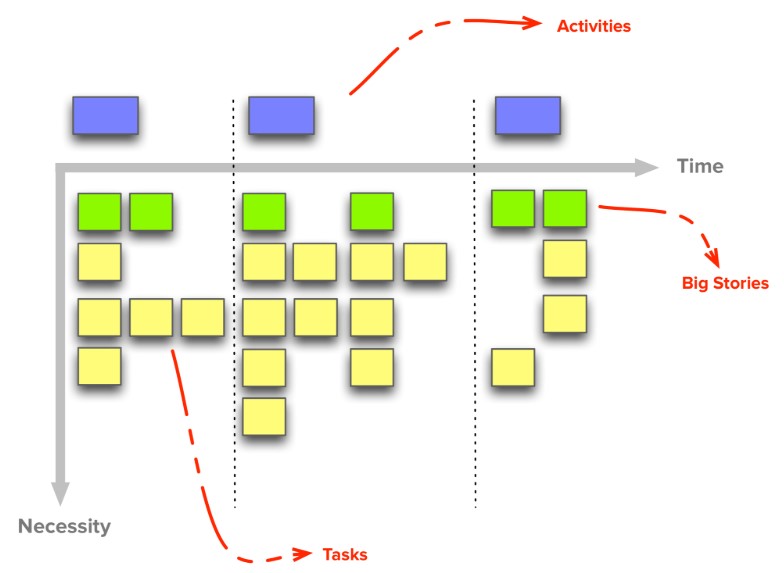
The benefits of the Story Mapping methodology
This is a relatively simple visual presentation that allows teams, customers, partners or other stakeholders to share a common understanding of what is happening. The method clearly defines how to gradually release product iterations.
4. KJ gaming methodology
KJ method is a group process for setting priorities. This approach helps to come to an objective common agreement from subjective data. It looks appropriate for groups of any size.
The eight-step process is designed for a one-hour interval. To conduct it, you should have a room with a spacious wall, stickers of several colors, a flipchart for results of prioritization and a facilitator.
- First, you define a focus question. Every session will have its own focus question.
- You need to organize groups with people (better from the different departments of the company).
- You put their opinions on sticky notes and place these notes on the wall. All participants place their sticky notes in random order on the wall.
- Then you group similar items and the facilitator instructs everyone to start grouping the similar items in another part of the room.
- Each group has own name and use the second color of sticky notes.
- Then participants vote for the most important groups to answer the focus question.
- You rank the most important groups. All sticky notes should be ordered by the number of votes.
- When a couple of groups have a much higher ranking than the others, the facilitator stops the process. That's it.
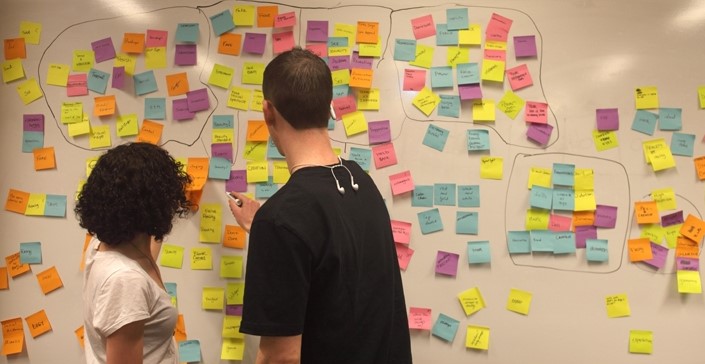
5. Feature Buckets prioritization technique
Adam Nash, the author of the method, describes his solution for determining priorities. In his opinion, the priority of tasks and functions varies greatly in different products and areas. Therefore, Nash outlines that the method was developed specifically for consumer online products.
According to the method, the features need to be distributed in four buckets.
- Metrics Movers have a strong impact on product and business targets. There should be specific goals and strategies for deciding to invest in a product or feature.
- Customer Requests are requests of the features. They are requested by customers. Usually, it's about additional improvements.
- Delight — the features that are created within a company based on an understanding of the design or technology. Working on them is important for surprising the customers.
- Strategic — the features that are important for strategic reasons related to future goals.

Each prioritization method has its own characteristics, and probably all of them can be adapted to the conditions of your product or company.
To consolidate work with methodologies and data visualization and to empower your prioritization skills, it's worth to try a modern product management service that helps to deal with priorities.
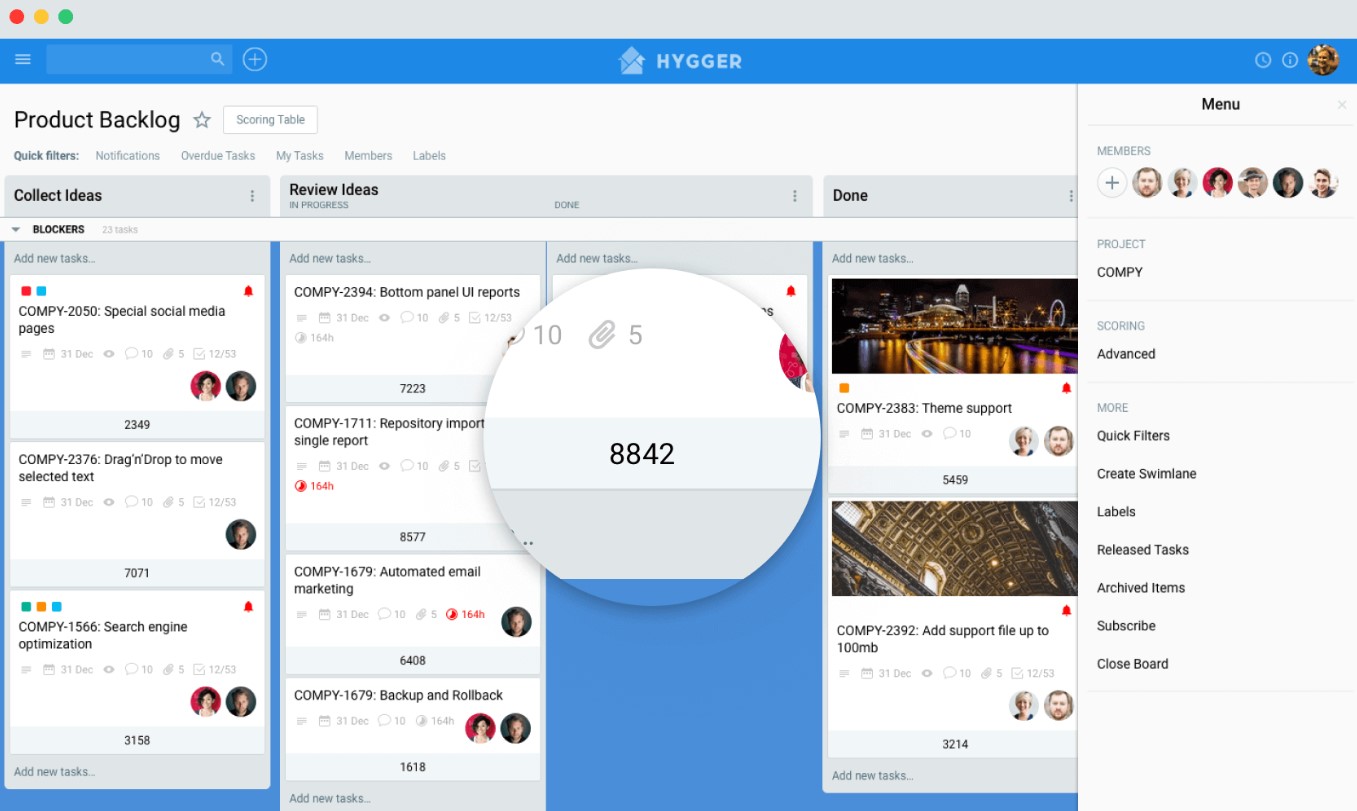

Online tools for determining priorities and tracking task statuses facilitate planning and help prioritize all product tasks quickly and easily.
Takeaways
Whatever methodology or technique you choose, it is important to implement it with all seriousness. Do not hesitate: you may try a simple prioritization solution first, and then move on to more complex approaches and prioritization frameworks. Anyway, all of them look like a reliable success factor in everyday life and in business management.